The Water-Heater Payoff
An expensive water heater may be efficient, but will it save enough energy to justify the purchase price?
Choosing a new water heater is stressful. The decision is usually made when your old water heater is leaking all over the basement floor. Considering the nature of the emergency, most homeowners accept whatever replacement unit the nearest plumber happens to have in his van.
Let’s imagine, however, that you could choose a water heater calmly rather than in a crisis. Should you choose an inexpensive water heater or a more expensive “energy-efficient” model?
Fuel matters

In U.S. homes, 97% of water heaters are storage tank-type units. The most common fuel is natural gas (51%), followed by electricity (41%). A small percentage of homes have water heaters that burn propane or fuel oil.
At average residential-fuel prices in the United States—$11.03 per thousand cu. ft. of natural gas and 11.7¢ per kwh of electricity—electric water heaters are more than three times more expensive to operate than natural-gas water heaters. A gas water heater, even one operating at only 60% efficiency, can provide 90,661 Btu of heat for $1. To get the same amount of heat from an electric water heater with an efficiency of 90% would require 29.5kwh and cost $3.46.
Electric water heaters are more common in areas of the country where electricity is cheap. That explains why, on average, households with electric water heaters spend only $257 per year to heat their hot water. Large families are more likely to have gas water heaters than are smaller families, so owners of gas water heaters use more hot water; they end up spending an average of $267 a year to heat their hot water.
Because both of these costs are relatively low, there is a limit to how much money you can save by upgrading your appliance. If you spend $267 per year for hot-water fuel, a new appliance that uses 30% less energy will save you only $80 a year.
Gas water heaters
The least expensive and most common type of gas water heater is a storage water heater with a flue up the center of the tank. The flue pipe is usually attached to a draft hood that looks like an upside-down funnel with open slots on the side.
These appliances, technically known as atmospherically vented water heaters, have several advantages over other types of water heaters: They are readily available, they are inexpensive ($400 to $630), and the fuel (natural gas) is cheap.
However, atmospherically vented water heaters also have a major disadvantage: They are susceptible to backdrafting (also known as spillage). When an atmospherically vented water heater is installed in a tight, energy-efficient house, the operation of an exhaust fan anywhere in the house—for example, a kitchen range hood—can suck combustion by-products down the water-heater flue and into the house. Because flue gases sometimes contain carbon monoxide, backdrafting is potentially dangerous. Atmospherically vented water heaters should be avoided unless you live in a mild climate and can place the water heater in your garage.
If you are wary of the backdrafting risk posed by a conventional gas water heater but are still attracted to the simplicity of a tank-style gas water heater without power venting, a good solution might be a direct-vent, sealed-combustion gas water heater from GSW Water Heating of Fergus, Ont. The efficiency of a GSW water heater is no better than that of similar conventional gas water heaters, but a GSW unit offers protection from backdrafting risks. According to the manufacturer, the appliance complies with Canada’s R-2000 technical-performance standard for home construction.
If you want to install a gas water heater inside your home, a safer type of storage water heater is one that is power-vented or equipped with a sealed-combustion burner. Unfortunately, these types of water heaters generally cost about $900 to $1200—significantly more than an atmospherically vented water heater.
The most efficient gas water heaters are called condensing units. The high efficiency of these appliances stems from the deliberate condensation of moisture in the flue gases—a step that wrings a few more percentage points of efficiency out of the combustion process.
Condensing gas water heaters are frightfully expensive. Expect to pay $4000 to $8000 for a unit with a stainless-steel tank, or $2500 for a unit (the Vertex, manufactured by A.O. Smith) with an enameled-steel tank. Paying that much only makes sense if you plan to use your water heater to supply space heat as well as domestic hot water.
Tankless water heaters are getting a lot of attention these days, for at least three good reasons: They are compact, they are highly efficient, and they can provide endless hot water.
The problem with tankless water heaters is the same problem suffered by solar hot-water systems: They usually don’t save enough energy to justify their high purchase price. The cost to install a tankless water heater varies; it can be as low as $1600 or as high as $3000. One reason for the high cost of installation is that these appliances require a nearby electrical receptacle and usually require a new flue. In some cases, the diameter of the gas supply line must be upgraded.
According to a study by Minnesota researchers, tankless gas water heaters use an average of 37% less energy than tank-type gas heaters. The savings range from $42 per year for families that use small volumes of hot water to $121 per year for high-use families. Although these savings are significant, the researchers concluded that they aren’t high enough to justify the high purchase and installation costs of these appliances.
WATER-HEATER OPTIONS AT A GLANCE
Here is a look at six appliances that represent high-performing products in their category. Some state thermal efficiency; others give an energy factor, which may be a range if the product is available in different tank capacities. Prices may vary by retailer and region, and do not include installation.
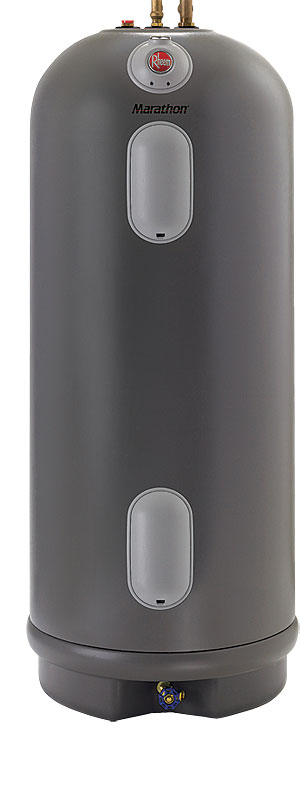 ELECTRIC TANK: Available in 40-gal. to 105-gal. sizes as well as a 50-gal. short model for small spaces, Rheem’s Marathon electric-resistance water heaters have an energy factor from 0.90 to 0.94 and thermal efficiency of 98%. Approx. price: $769-$999
ELECTRIC TANK: Available in 40-gal. to 105-gal. sizes as well as a 50-gal. short model for small spaces, Rheem’s Marathon electric-resistance water heaters have an energy factor from 0.90 to 0.94 and thermal efficiency of 98%. Approx. price: $769-$999 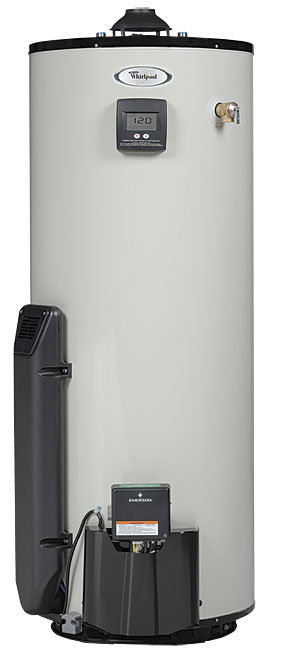 ATMOSPHERIC GAS: Whirlpool’s high-efficiency gas water heaters use a patented air-intake system to create a pressurized combustion chamber. Available in 40-gal. and 50-gal. tanks, the Whirlpool products have an energy factor of 0.70, are affordably priced, and are available at Lowe’s stores. Approx. price: under $850
ATMOSPHERIC GAS: Whirlpool’s high-efficiency gas water heaters use a patented air-intake system to create a pressurized combustion chamber. Available in 40-gal. and 50-gal. tanks, the Whirlpool products have an energy factor of 0.70, are affordably priced, and are available at Lowe’s stores. Approx. price: under $850
 GAS TANKLESS: With an energy factor of 0.91, the Noritz NRC661 condensing tankless water heater delivers 6.6 gal. of hot water per minute with a maximum input of 120,000 Btu/hour. This small unit is designed for retrofits and accepts 1⁄2-in. gas piping up to 120 ft. in length. Approx. price: $1000
GAS TANKLESS: With an energy factor of 0.91, the Noritz NRC661 condensing tankless water heater delivers 6.6 gal. of hot water per minute with a maximum input of 120,000 Btu/hour. This small unit is designed for retrofits and accepts 1⁄2-in. gas piping up to 120 ft. in length. Approx. price: $1000  HEAT PUMP: GE calls its GeoSpring a hybrid water heater because it has both a heat pump and electric-resistance elements. GE does not offer a coefficient of performance for the heat pump, but lists an energy factor of 2.4, suggesting that the GeoSpring is 240% efficient. Approx. price: $1300
HEAT PUMP: GE calls its GeoSpring a hybrid water heater because it has both a heat pump and electric-resistance elements. GE does not offer a coefficient of performance for the heat pump, but lists an energy factor of 2.4, suggesting that the GeoSpring is 240% efficient. Approx. price: $1300
 POWER VENTED OR SEALED COMBUSTION: Rheem markets this power direct-vent water heater as a good option for tight homes where it is important to keep an eye on indoor-air quality. The two-pipe system can be vented vertically or through a sidewall. These 40-gal. to 70-gal. models have an energy-factor range from 0.62 to 0.67. Approx. price: under $850
POWER VENTED OR SEALED COMBUSTION: Rheem markets this power direct-vent water heater as a good option for tight homes where it is important to keep an eye on indoor-air quality. The two-pipe system can be vented vertically or through a sidewall. These 40-gal. to 70-gal. models have an energy-factor range from 0.62 to 0.67. Approx. price: under $850 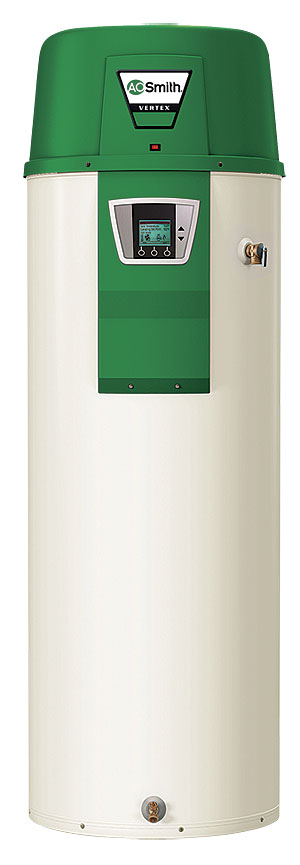 GAS CONDENSING: The A.O. Smith Vertex is a fully condensing, power direct-vent gas water heater. The small 50-gal. storage-style unit boasts 96% thermal efficiency and continuous hot water with 164-gal. first-hour delivery and 129-gal. recovery rise at 90°F. Approx. price: $2500
GAS CONDENSING: The A.O. Smith Vertex is a fully condensing, power direct-vent gas water heater. The small 50-gal. storage-style unit boasts 96% thermal efficiency and continuous hot water with 164-gal. first-hour delivery and 129-gal. recovery rise at 90°F. Approx. price: $2500
Electric water heaters
If your electric rates are below the national average of 11¢ per kwh or if your house doesn’t have access to natural gas, you might be happy with a conventional electric water heater. These appliances generally cost from $300 to $450, not including installation. Still, although an electric water heater may cost $500 less than a power-vented gas water heater, the higher cost of operation over its lifetime may wipe out your savings.
Electric-resistance tankless water heaters have a major disadvantage: When in operation, they use huge amounts of electricity. A water heater sized to meet the needs of a typical household can draw up to 36,000w and may require 300-amp electrical service.
If you go this route, you’ll find that the cost to hire an electrician and to upgrade your electrical service is usually significantly more than the cost of the water heater. Then when all is said and done, you’re still stuck with an expensive fuel.
Most electric water heaters use electric-resistance elements to heat water, but a more efficient way to use electricity to heat water is with a heat pump, a device that heats water using a compressor like the one found in a refrigerator or an air conditioner. While a refrigerator transfers heat from its interior to the room where it is located, a heat-pump water heater transfers heat from the room to a tank of water.
One way to measure the efficiency of an electric water heater is by its coefficient of performance (COP). Researchers have found that heat-pump water heaters have an average COP of 1.8 or 1.9. That makes heat-pump water heaters twice as efficient as electric-resistance water heaters, which typically have a COP of 0.9.
Heat-pump water heaters don’t perform the same way as conventional electric water heaters. While the electric-resistance elements in a typical water heater can heat 20 gal. per hour, a heat pump can manage only about 8 gal. per hour (or even less, if the ambient air temperature is below 68°F). This drawback is overcome by the use of a larger-than-usual tank.
The incremental cost to install a heat-pump water heater (compared to an electric-resistance water heater) varies from $1400 to $2700, depending on which model you choose. If you live in a location with inexpensive electricity (say, 8.5¢ per kwh), a heat-pump water heater will save you between $20 and $135 per year compared to an electric-resistance water heater. You’ll save more if the water heater is located in a big, warm room (like an overheated basement) than if it is located in a small, cold room. If you live in a location with expensive electricity (say, 17¢ per kwh), your savings will be in the range of $40 to $270 per year.
Not every house is a good candidate for a heat-pump water heater. Because these appliances rob heat from the rooms in which they are located, they make more sense in hot climates than cold climates. If the climate is mild, it’s possible to install a heat-pump water heater in a garage. In climates where garages can drop below freezing, the best place for a heat-pump water heater is in a basement. A large, warm basement with a high ceiling is ideal. It’s usually not a good idea to install a heat-pump water heater in a small basement, a cool basement, or a basement with a low ceiling.
Energy factor may be overstated
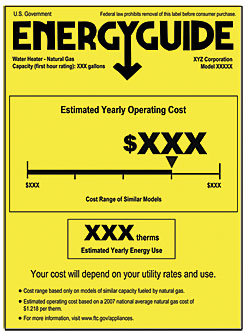
One common way to describe the efficiency of a water heater is by citing its energy factor (EF). For gas water heaters with inputs of 75,000 Btu/hour or less and electric models with inputs of 12kw or less, the EF is measured according to a standardized laboratory method that accounts for heat losses up the flue and standby losses that occur when hot water sits in the tank. However, the EF rating doesn’t account for distribution (piping) losses.
An EF test takes 24 hours. The test procedure specifies the ambient temperature of the room and the total volume of the hot-water draws (64 gal.). This volume of hot water is on the high side; in typical North American homes, daily hot-water draws average between 41 gal. and 44 gal.
The test requires six draws of more than 10 gal. each at one-hour intervals, followed by 19 hours of inactivity. In a typical home, however, there are many low-volume draws rather than a few high-volume draws; only 3% of actual hot-water draws are greater than 10 gal. of water.
The EF rating is the ratio of the energy delivered to the water divided by the energy used by the water heater. The higher the energy factor, the greater the appliance’s efficiency. The typical gas water heater has an EF of about 0.6, while a typical electric water heater has an EF of about 0.9.
Because of the quirks of the testing method, the EF test may overstate the efficiency of an installed water heater. Most have an in-use coefficient of performance that is significantly lower than their EF rating. Water heaters not rated for EF may state the thermal efficiency instead. Neither the EF nor the thermal efficiency of water heaters is shown on Energy Guide labels.
Energy Star isn’t the last word
Some of the water heaters mentioned in this article are available with Energy Star certification. However, the Energy Star labeling program for water heaters has several quirks that you should be aware of:
- Some Energy Star-labeled water heaters—for example, non-condensing gas water heaters—aren’t particularly efficient (minimum EF: 0.67).
- Some Energy Star-labeled water heaters—especially condensing gas water heaters and solar water heaters—are so expensive that they represent a questionable investment.
- Some types of water heaters that aren’t eligible to receive an Energy Star label—notably, indirect water heaters that are hooked up to a boiler—may be a good choice for some homes.
In short, while the Energy Star labeling program for water heaters has some logic behind it, it shouldn’t be the main criterion for choosing a water heater.
Caveats and recommendations
At your local building-supply store, you can buy a 50-gal. electric water heater for $300 to $450, a 50-gal. gas water heater for $400 to $630, or a tankless gas water heater for $1050 to $1350. A direct-vent sealed-combustion water heater manufactured by GSW—an appliance that operates without electricity—costs about $900. A power-vented water heater costs $1020 to $1200.
The federal government is now offering tax credits for heat-pump water heaters and some models of tankless heaters. The tax credits apply to heaters installed in existing homes only. Here are the details:
- There is a tax credit of $300 for natural-gas-, propane-, and oil-fired water heaters that have either an energy factor (EF) of at least 0.82 or a thermal efficiency of at least 90%.
- There is a tax credit of $300 for heat-pump water heaters that have an EF of at least 2.0.
- There is a 30% tax credit for solar hot-water systems.
What type of water heater should you buy? There is no easy answer to the question, for a variety of reasons:
- The cost to install a water heater varies widely. In areas with high labor costs, the labor to install a water heater can cost more than the heater.
- It’s hard to predict maintenance costs and equipment life spans.
- Families that use a lot of hot water will see a quicker payback for expensive equipment than families that don’t use much hot water.
- Energy costs vary. Electric water heaters make the most sense in areas with inexpensive electricity.
- Those concerned about global warming, especially those who have a roof-mounted photovoltaic system, may prefer an electric water heater to a gas water heater.
That said, it’s possible to make a couple of firm statements. First, condensing gas water heaters and solar water-heating systems are expensive and unlikely to be cost-effective. Second, it’s hard to justify the high cost of a tankless water heater unless your family uses a lot of hot water.
According to the American Council for an Energy-Efficient Economy (ACEEE), the water heater with the lowest life-cycle cost is an electric heat-pump water heater ($4125 over 13 years).
Close on its heels is a gas tankless water heater ($4925 over 13 years). The ACEEE calculates that an electric water heater has a cost over 13 years of $6528.
One reason that the ACEEE seems to favor gas tankless water heaters is the low price it assigns to this appliance: only $1600, including installation. Few plumbers are likely to agree to such a low price.
Martin Holladay is a senior editor. Photos courtesy of the manufacturers. Drawings: Jacqueline Rogers.
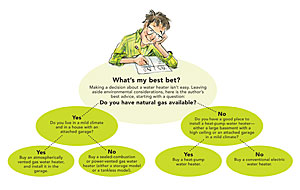










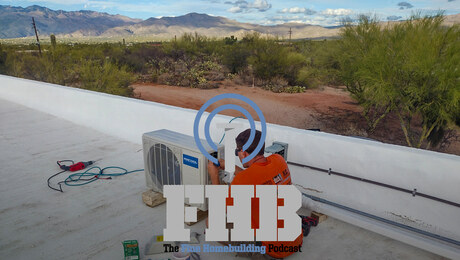
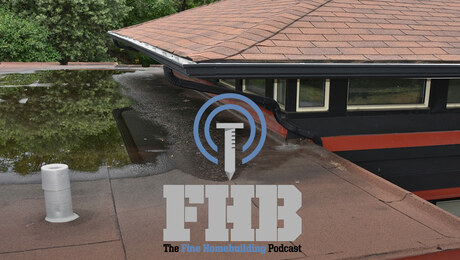



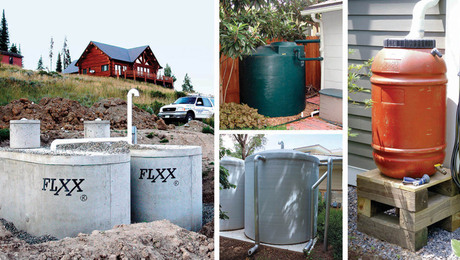










View Comments
There are other factors in selecting a water heater. After a gut-to-the-studs fire in Portland, OR, we (retired couple) installed a mini-split HVAC and an induction range, and, in the interest of the planet, a tankless DHWH. I can't state the cost of the tankless because the contractor and his plumber never met a change order they couldn't screw up. My gas bill this month was $2.27. My service charge was $8.00. So, on an annual basis, I'm paying $27.24 for gas, $96 for the privilege of being billed for the gas.
Had I gone for a heat pump (electric) DHWH, I'd have $96/year to offset the higher cost and might well have done more for the planet, although it's probably still not a net payoff for the tankless, given our low usage. It's also important to keep in mind that a tankless should have a regular descaling process, frequency depending on local water hardness. DIY cost is almost nothing, professional could be $100 every couple of years in a hard water location.